March 16th, 2024
6minute read
Istruggle to understand the weird relationship between Red China and Taiwan.
Also known as Formosa, Taiwan is 13,826 square miles of gleaming high-tech success.
With nearly 24 million citizens, Taiwan is one of the most densely populated countries on earth.
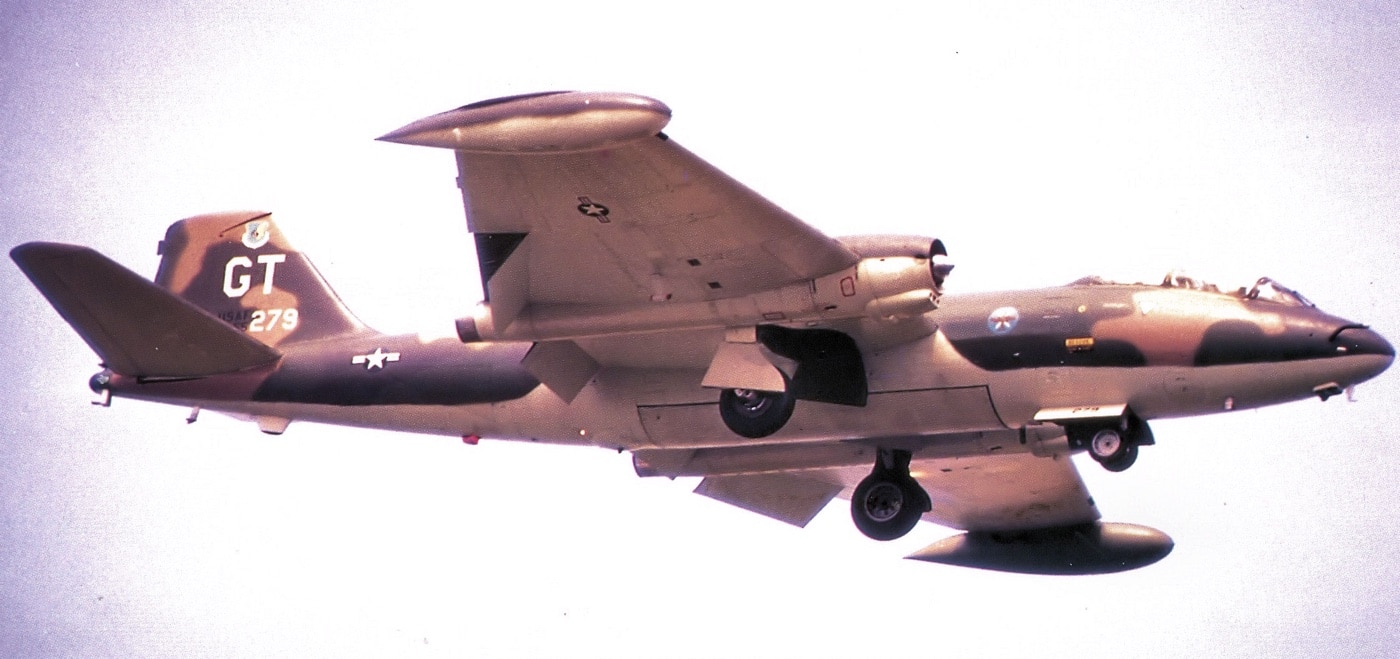
Martin EB-57E of the 556th Reconnaissance Squadron. The plane is now at Peterson Air and Space Museum, CO. Image: U.S. Air Force
They also make some mean microchips.
As a result, the Chinese Communists covet Taiwan in a fashion that approaches unseemly.
With the end of the war, the Chinese Nationalists formed a democracy in what is now Taiwan.
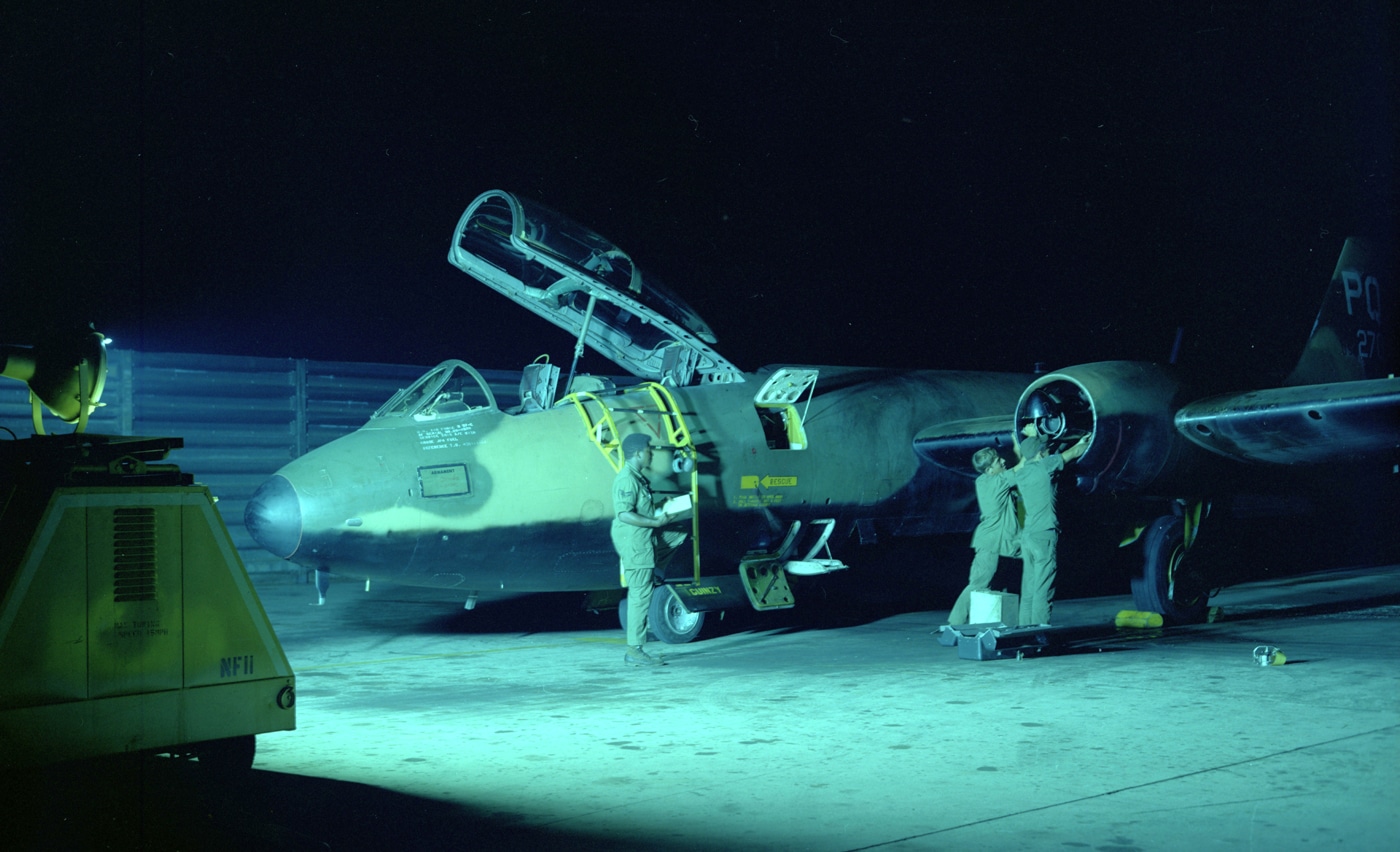
At Phan Rang AB, South Vietnam, the ground crew replaces a faulty starter unit on a U.S. Air Force B-57 of the 8th Tactical Bomber Squadron. Image: Sgt. Christopher G. Bunge/NARA
The Chinese Communists got their feelings hurt over this in a big way and never quite found closure.
The controversy burns brightly even today, with the Communists threatening to invade seemingly every few weeks.
Nowadays we cant seem to formally recognize the sovereignty of Taiwan without inducing the gyrating fantods in the Reds.
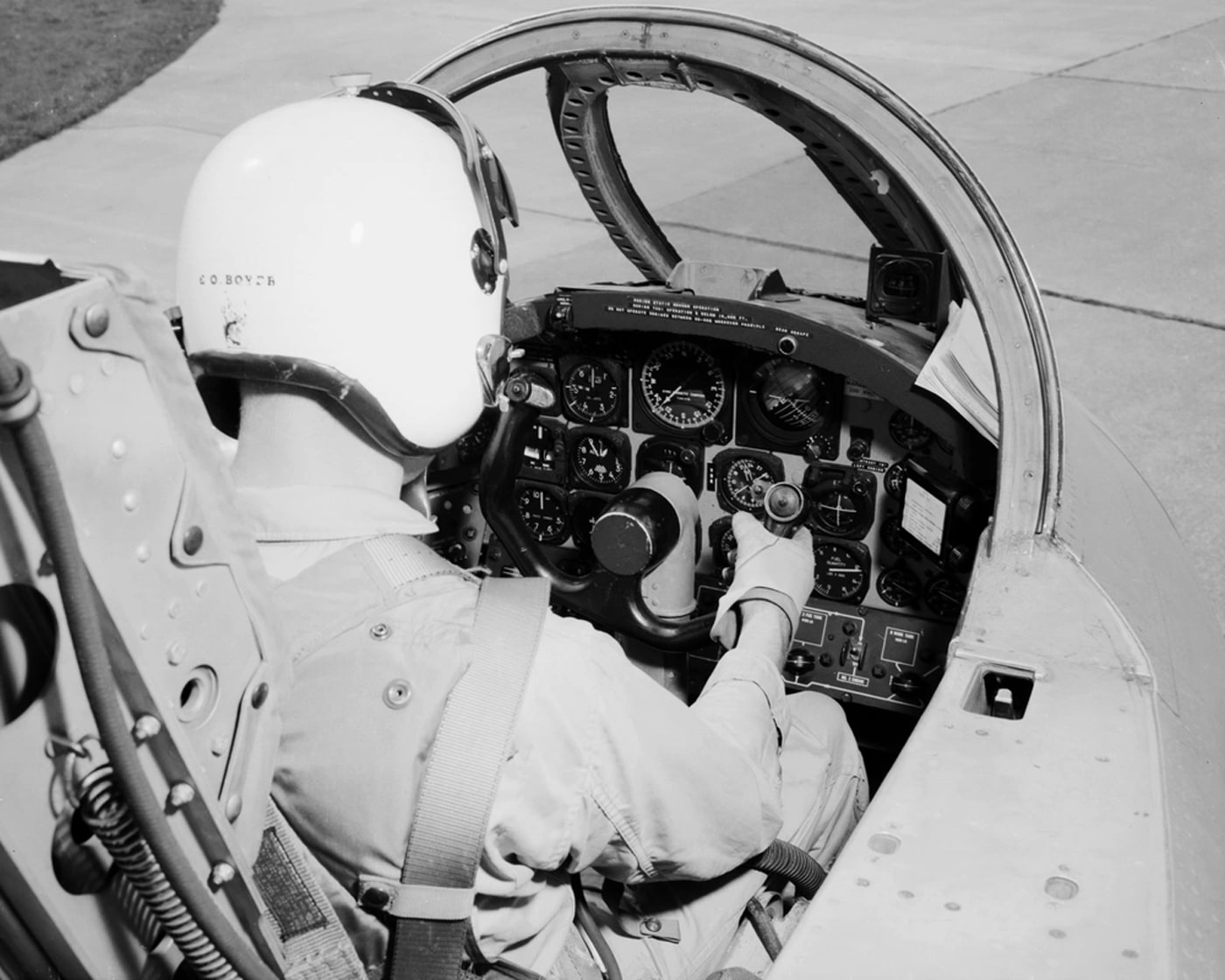
In this photo, a pilot sits in the cockpit of a B-57 Canberra. The instrument panel is in clear view. Image: NASA
However, that hasnt stopped us from sending Taiwan scads of weapons.
Such shenanigans have been going on for quite a while.
The plane was cruising at high altitude on the assumption that Chicom interceptors could not reach it.
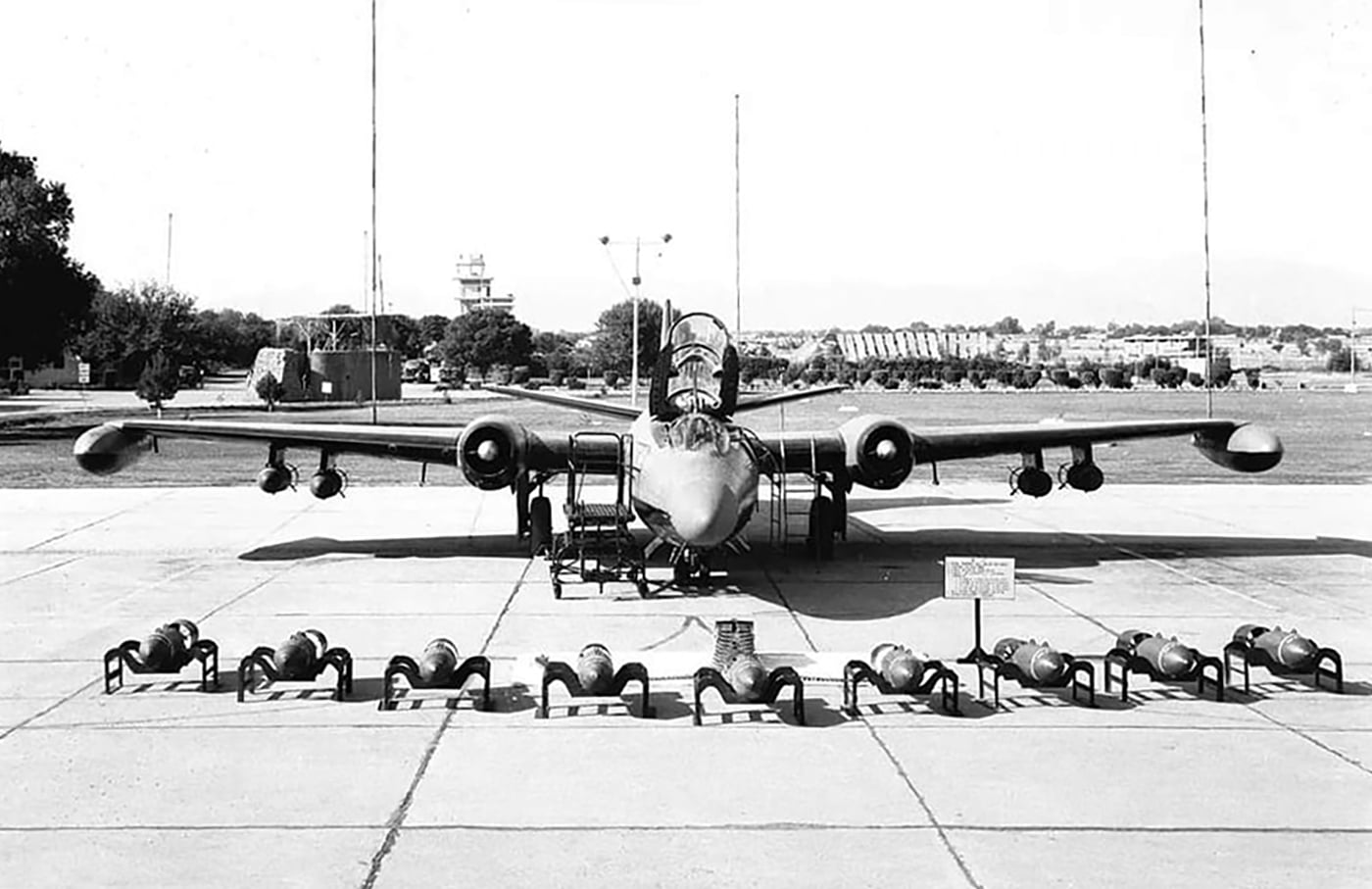
A B-57 Canberra from the Pakistan Air Force’s No. 35 Bomber Wing on display along with its weaponry at Sargodha Air Force Base in the 1960s.
However, the Communist Chinese had been planning for this.
The Communists loosed a three-round salvo of V-750 (1D) missiles at the high-flying recon plane.
These were Chinese versions of the Soviet-designed S-75.
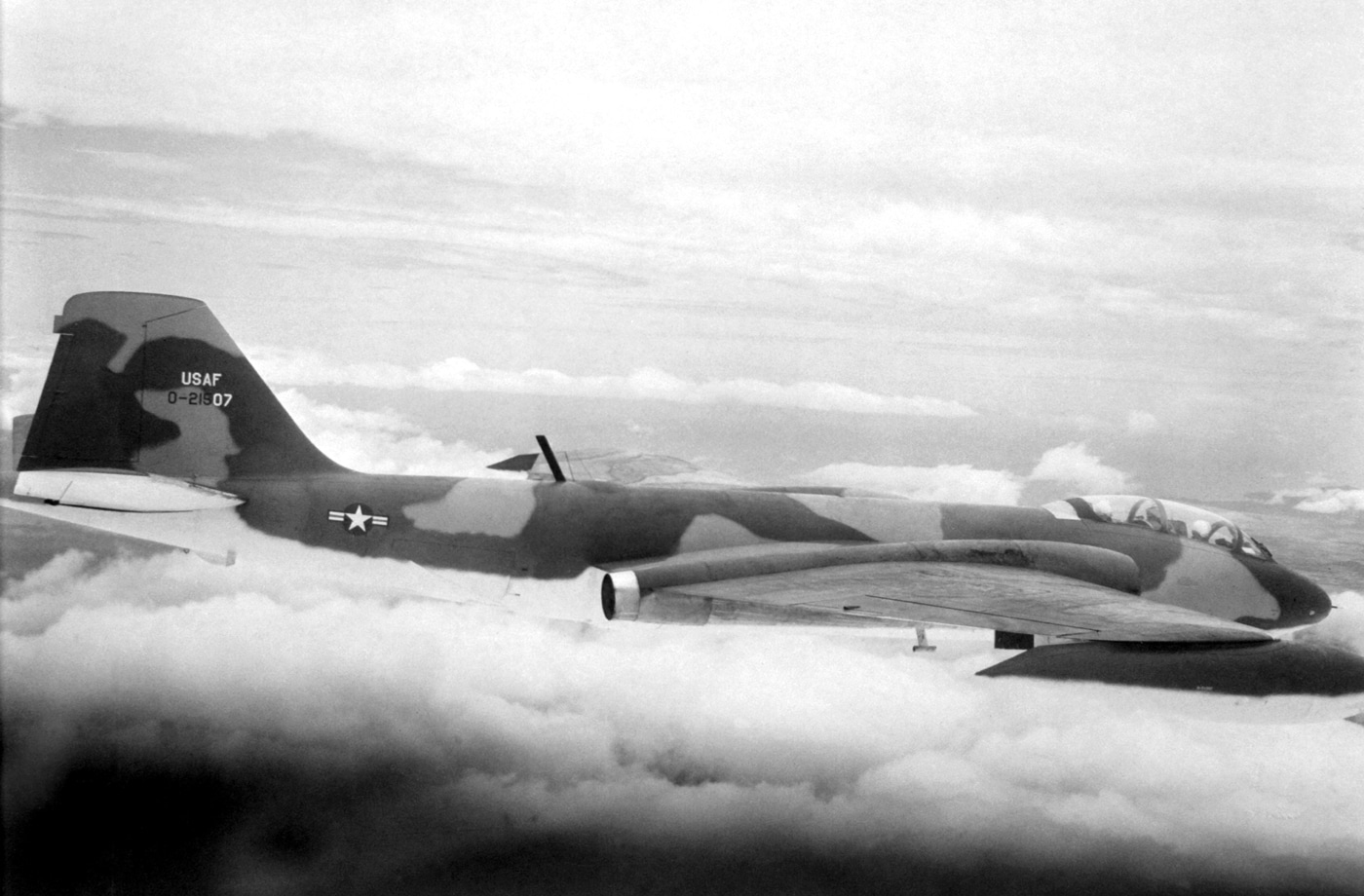
During early 1967, this B-57 Canberra bomber is heading for a strike mission in Vietnam. Image: NARA
NATO designated this new weapon the SA-2 Guideline.
American pilots who faced the things later in Vietnam called them flying telephone poles.
These radical new weapons tracked true and blew the Taiwanese bomber out of the sky.
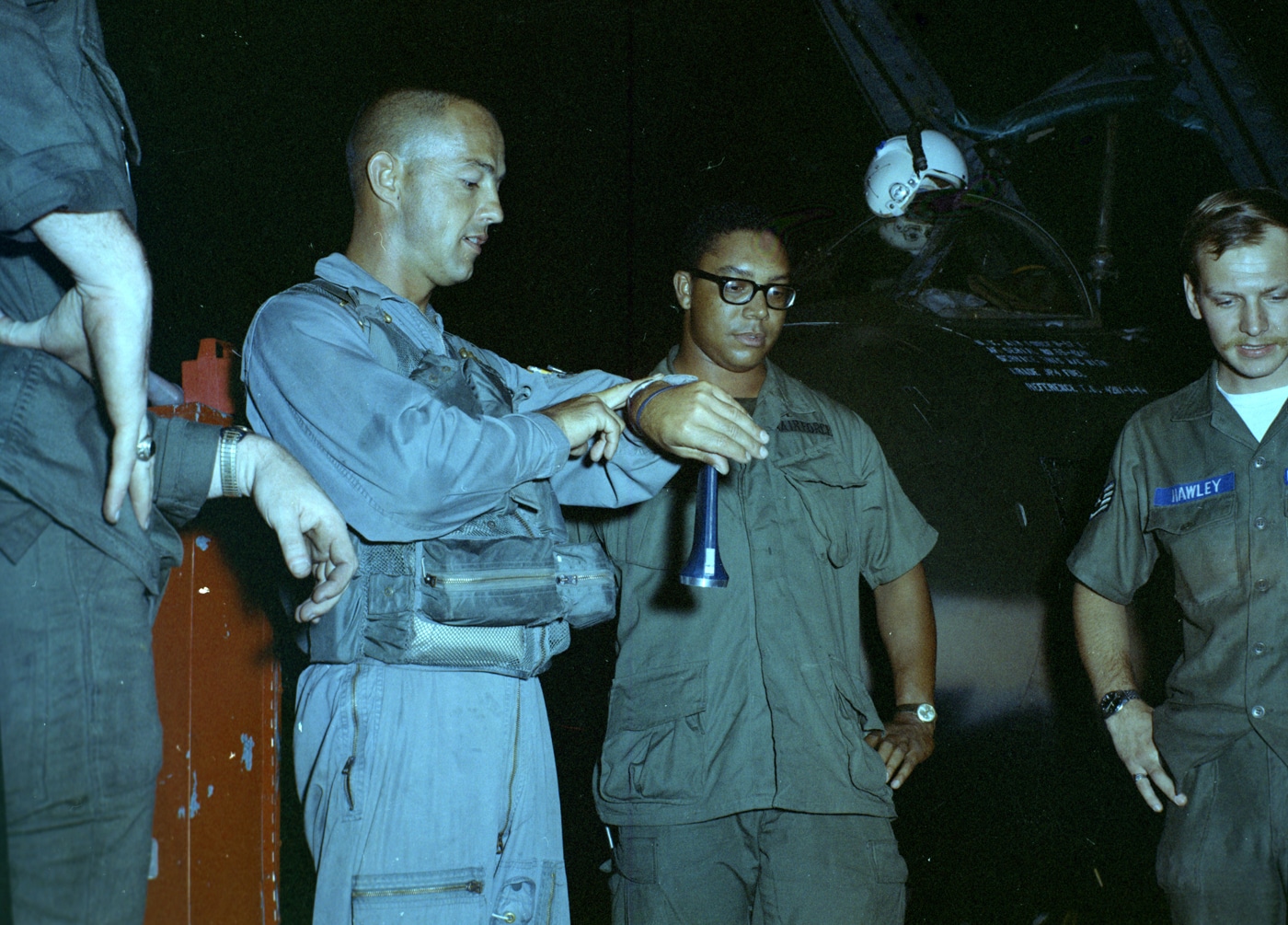
At Phan Rang Air Base, South Vietnam, U.S. Air Force B-57 navigator Maj. Auguste Planchon talks to the ground crew prior to a combat mission. Image: NARA
Though the world kept right on spinning, history had been made that fateful day over Communist China.
This was the first time a combat aircraft had been successfully downed by a surface-to-air missile.
It would not be the last.
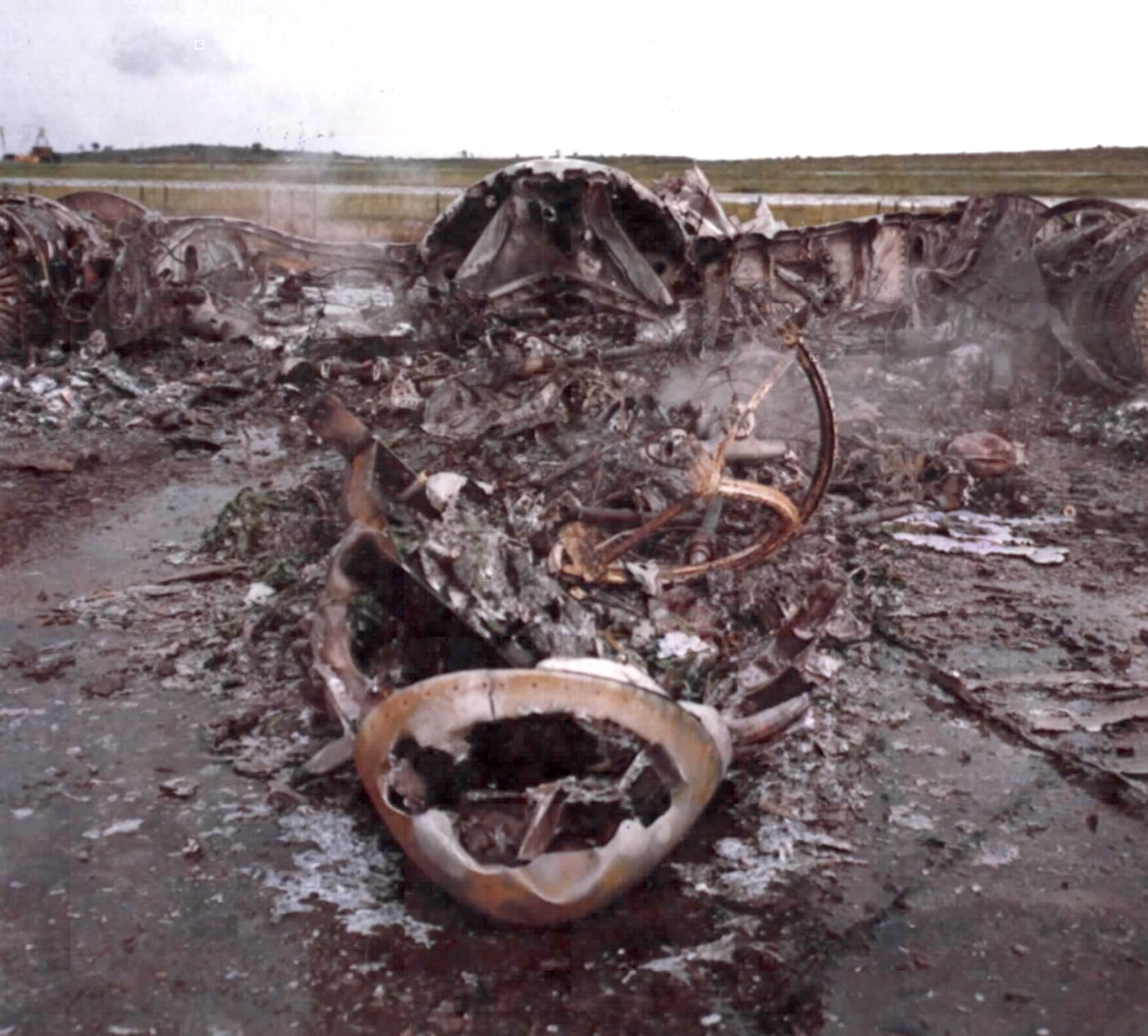
On 1 Nov 1964, VietCong guerrillas shelled the Bien Hoa Air Base with 81mm mortars. A total of 28 B-57 bombers were damaged or destroyed in the attack. Image: NARA
The Plane
The B-57 Canberra had some fascinating parentage.
The United States fought most of the Korean War with WWII-surplus weapons.
Air Force planners subsequently issued an urgent request for an advanced all-weather jet-powered medium bomber.
As time was of the essence, only existing designs already flying were considered.
Contenders were drawn from both at home and abroad.
After a competitive fly-off, the Canberra came out on top.
The process that led to the adoption of the Canberra as the American B-57 was sound.
The Brits contracted with the Glenn L. Martin Company to produce the Canberra under license in the United States.
This allowed Martin to tool up quickly to build the plane using existing production drawings.
They also borrowed a couple of operational copies of the aircraft from the British to use as patterns.
The plane also packed eight .50-caliber machineguns in the wings for strafing missions.
These weapons were later exchanged for four 20mm cannon.
Building a comparable plane up from scratch would have taken much longer.
Despite all the fuss, the Korean War wrapped up before the B-57 was operational.
Regardless, by the late 1950s the B-57 was ready for prime time.
Ultimately some 403 airframes were produced in a wide variety of configurations.
The original B-57A was never declared combat ready.
The B-57B was the definitive operational model.
Any new tactical aircraft experiences unexpected challenges.
The original Canberras were powered by British Armstrong Siddeley Sapphire engines that were contracted to Wright as the J65.
When Wright could not provide the required engines in a timely fashion they subcontracted the work out to Buick.
Wright took over engine production in 1954, and this problem resolved itself.
Once the bugs were ironed out, the B-57 provided solid service.
Practical Tactical
The B-57 saw extensive service in Vietnam as a multi-role combat aircraft.
However, it was a rocky road getting there.
However, the plane carried four hours of internal fuel and an impressive bomb load.
This made it very effective at interdicting targets on the Ho Chi Minh Trail.
There was even a short-lived program to convert the B-57 into a dedicated gunship.
However, theAC130 Spectrewas markedly more effective, so Pave Gat was scrapped.
By the end of the Vietnam War, 58 of 94 deployed B-57s had been lost.
The RB-57E reconnaissance variant was fabulously successful as a high-altitude surveillance platform, particularly at night.
Flying at 16,000 feet, it only took 212 RB-57 flights to thoroughly image the entire Cambodian border.
The planes sported the epic callsign Moonglow.
Ruminations
The B-57 soldiered on until 1983 when it was formally retired by the USAF.
NASA supposedly still operates a handful of the planes for high-altitude research even today.




